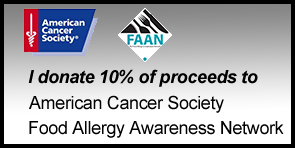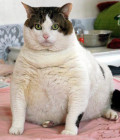The Second Brain, Bacteria and Serotonin Connection
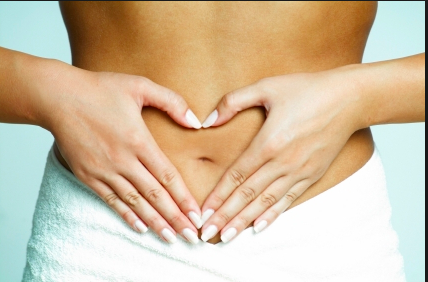
Great food not only provides nourishment and satisfaction but it stimulates our senses. Great food creates joy, exhilaration, and pleasures that have been described as sensuous, even orgasmic.
When your body goes out of whack due to lack of nourishing food and results in low serotonin levels, you go out of whack, too. Chronic fatigue syndrome, headaches, depression, low sex drive and weight gain are just some of the symptoms from low serotonin. When serotonin is lacking it seems the best sure-fire way to feeling better is eating carbs and sugar (which our bodies so desperately crave) but these foods are not the long-term solution. You don't want to become a prisoner to foods such as bagels, pasta, ice cream and donuts; you will spiral out of control. Before too long, weight gain, low self esteem, depression and sickness come back, again.
The good news is that it's not hard to obtain optimal serotonin levels, glowing healthy, vitality and to attain your ideal weight. I have the information in this post and even more information in Nourish The Brain; Lose The Tummy
Brain, Gut and Serotonin Connection
Since approximately 95% of serotonin is manufactured by our gut bacteria, what we feed our bellies directly affects our brains.

Forget popping Valium and Prozac a healthy gut produces a chemical called benzodiazepines which can actually produce feelings of serenity, minimize pain.
Think Twice And Nourish Your Noggin
We need to stop living in just our heads and start paying attention to our guts. The expression "As below so above" is is true when it concerns our bodies.
Did you ever have a strong gut feeling or "butterflies" in your stomach? This is because our stomachs do much more than just digest our food.
Our gut and brain are actually the same tissue that is separated during fetal development which becomes your central nervous system and enteric nervous system. These two systems are hard wired to our brain via the vagus nerve, (runs from our brain stem down to our abdomen). This is why our stomach is thought of as a second brain and explains why what we put in our stomach directly effects our brain.
"A big part of our emotions are probably influenced by the nerves in our gut," says Emeran Mayer, professor of physiology, at the University of California, LA (U.C.LA.)
Patient Heal Thyself makes the point that it's backwards thinking that our brains determine emotions of happiness or sadness, it's really the gut that is most responsible for our mental state.
The Battle Of Good Vs. Evil Bacteria
Our digestive tracks are lined with 400 species of bacteria, which make up our intestinal flora. It's a veritable zoo of friendly and unfriendly critters fighting for dominance. Too many bad critters results, yeast overgrowth (candida) and improper nutrition due to the fact that we can not digest our foods properly and our bodies can not absorb our foods nutrition. This causes weight gain, and sickness.
A proper balance of good and bad bacteria makes a friendly zoo of happy critters promote serotonin production and a happy healthy slender body.
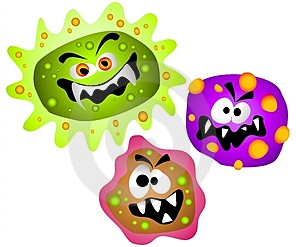
Who Do You Want To Win This Epic Battle?
I'm sure we all agree we want the good bacteria to reign.
It all begins with our mouths and what we eat. After our food gets past the stomach, we are relying on a healthy and robust internal microfloral environment to both battle the bad guys and take up space on your gut wall so that the baddies have no place to land and colonize.
Antibiotics, birth control NSAIDs, simple carbohydrates, processed foods, sugar, grains (wheat in particular) ongoing stress are all contributors to bad bacteria.
Antibiotics
Antibiotics is something we sometimes can not avoid but they destroy the balance of our gut flora. Their job is to kill bad bacteria but since they don't know the difference it's a real blood bath for both good and bad. Prolonged use of antibiotics can cause yeast and candida, which inhibits serotonin and makes us sick. It's a good idea to flood the system with kefir after a round of antibiotics to restore balance.
Here is a study which shows substantial loss of diversity and a shift in intestinal flora.
Consuming live active cultures of beneficial bacteria and enzymes will help good bacteria prevail.
Sound delicious? It can be delicious.

Move Over Yogurt There's A New Kid On The Block - Get Busy With Kefir
Great news, kefir a powerful probiotic, (Probiotic food is food that contains beneficial live bacteria) not only reigns supreme over the battle of good vs bad bacteria, it's LOADED with tryptophan (precursor to serotonin) and billions of beneficial bacteria, vitamins including vitamins B6 and B12 and vitamin K, calcium, phosphorus, and magnesium, amino acids, enzymes and also has anti-antiseptic and anti-bacterial. Perhaps this is why kefir originates from the turkish word "good feeling."
Kefir blows yogurt away (especially store bought yogurt filled with sweeteners and additives) and has about 5 times more beneficial bacteria than yogurt.
Whereas yogurt passes through for a helpful visit. Kefir actually sets up camp and colonizes in the intestinal tract.
Kefir is fermented milk which resembles tiny cauliflower florets, called grains. Because of the abundance of the enzyme alctase which gobbles up most of the lactose, most people who are lactose intolerant can eat kefir without a problem.
Kefir is as old as the hills, according to the website, babushkas kefir, it goes back over 2000 years ago in the Caucasus Mountains and was considered a gift from the Gods. Kefir back then was mixed with healthy raw cow or goat milk and left in goatskin bags made of leather for days to ferment. The custom back then was to leave the leather bag by the front door. Anyone entering the house was to kick or shake the bag to speed up the process of culturing. Kefir was real delicacy back then and a sign of family tribal wealth.
Don't worry I'm not going to suggest your ferment your kefir in a leather bag and have people entering our house kick it. We can make it in our own kitchens and it is actually very delicious, especially when served with fruit and nuts or made into a fruit smoothie.
Since we are a nation of convenience (I love convenience as much as the next guy) store bought kefir is the first thing that comes to mind.
Convenience Comes With A Price
According to my math three 32 oz bottles of kefir a week is approximately $700.00 per year. A kefir starter kit is approximately $14.00 plus milk, by my estimations it works out to about $100.00 a year. Kefir is a living thing and can live for months, even years growing in size you will end up with more than enough and will be giving it away.
Most store bought kefir (definitely the ones you find in the grocery store) have a similar problem to yogurt, unhealthy fillers and sugars. Lifeway has approximately 10 beneficial bacteria, home-made kefir has approximately 40 to 50 beneficial bacteria; that's a significant difference.
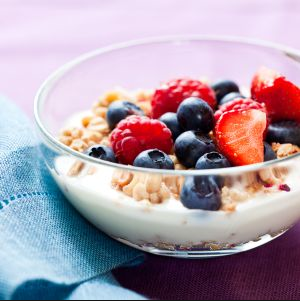
Kefir Recipe
1 tbsp kefir grains
1 quart of milk (raw is best if you can get it)
Put kefir grains in a glass jar add milk, cover with a cheesecloth secured with a rubber band. Let stand for two days stirring occasionally.
When milk kefir mixture is thick pour through a strainer into a clean bowl or jar. Add the grains to another jar with milk and repeat process for more delicious kefir.
IMPORTANT: It's important to use plastic and glass never metal when handling or eating kefir, metal damages the cultures.
Other Fermented Probiotic Serotonin Producing Foods
Fermented foods contain beneficial bacteria filled with B Vitamins which aids digestion and assimilation of important nutrients that produce serotonin. - Donna Gates (The Body Ecology Diet)
Tim Ferriss author of the Four Hour Body says 90% eating 5 tablespoons of fermented foods such as sauerkraut and kim chi (korean pickled cabbage) helps serotonin move from the gut to the brain.
Again, don't buy store bought, pasteurized sauerkraut or Kim Chi, only buy organic miso. Natto can be found in the Asian grocery store.
Mister Immortal is now in the process of making his own sauerkraut, if it comes out good I will share the recipe with you :o) Until then you can get delicious raw unpasteurized sauerkraut on my link in this post.
More to come, stay tuned for part III. We get into the nitty-gritty of exactly what foods eat and what the best combinations are for producing optimal serotonin levels.
